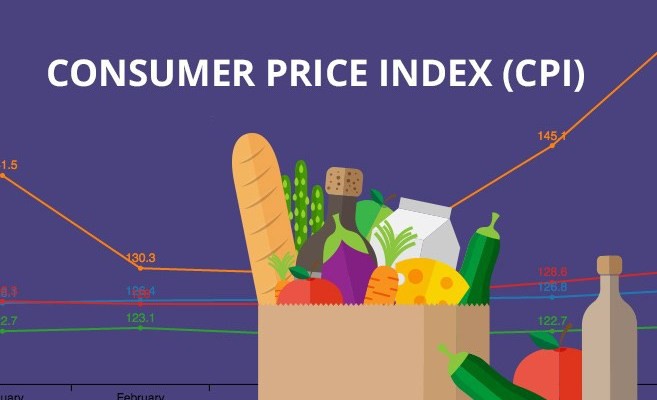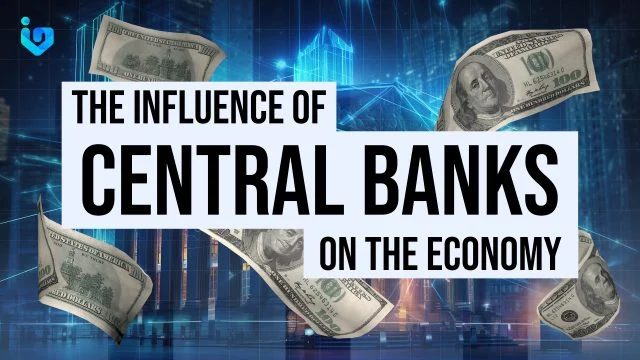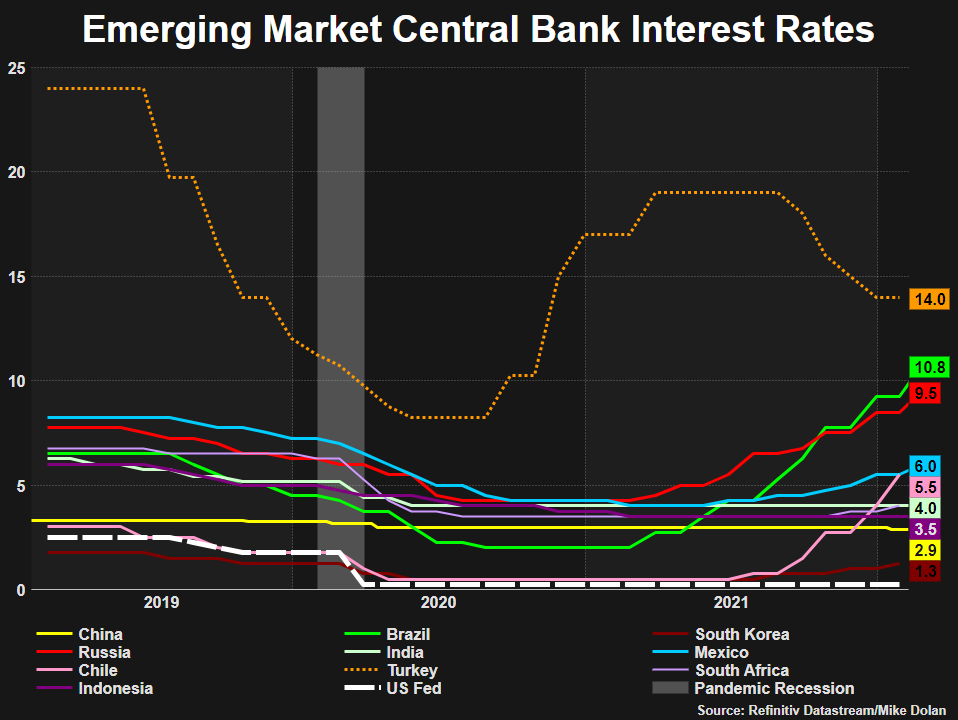Central bank interest rates impact on monetary policy like a captain steering a ship through stormy seas. These rates are the helm of our economy, guiding it towards growth or buffering against inflation. I watch these decisions closely. They affect your savings, loans, and even job prospects. Today, I’ll break down how changes in these rates work and why they’re key to financial stability. Let’s dive in and unfold the mystery of how a single number can powerfully dictate the flow of money and shape our economic future.
Understanding the Mechanics Behind Interest Rate Adjustments
The Role of Central Bank Rate Decisions in Economic Management
Central banks have a huge job. They keep the economy stable. Their tool? Interest rates. When the economy slows, they cut rates. This makes loans cheaper. People buy more stuff. Businesses invest. This sparks growth.
But if prices climb too fast, central banks hike rates. Loans cost more. People spend less. It slows inflation. It’s a careful balance. Keep growth steady but prices in check.
The federal funds rate is key. It sways what banks charge each other for loans. Changes here ripple through the economy. Lower rates mean more cash moving around. Higher rates do the opposite.
Rate decisions also set the tone for the market. They signal what the central bank plans. Traders and investors watch closely. They adjust their moves based on these signs.
How Interest Rate Adjustments Influence Monetary Policy Tools
Now, how do rate changes move policy tools? Let’s start with open market operations. These are the buy and sell plans for government securities. Central banks use them to control the money around. In easy terms, they can put more money out or take it back in.
Interest rate adjustments guide how open market operations work. Low rates? The central bank buys more securities. This pumps money into the banks. High rates? They sell securities. This takes money out of circulation.
Then there’s the discount rate. That’s what banks pay to borrow money straight from the central bank. A lower discount rate can mean more loans for everybody.
Quantitative easing is another tool. It’s used when normal ways don’t work well. The bank buys assets, often bonds, to push more money into the system. This should make spending and investing easier.
The idea is simple. Adjust rates to make sure there’s enough money out there. Not so much that prices soar. Not so little that the economy stalls.
Each tool has its role. Like gears in a watch. They work together, driven by interest rate adjustments. These tweaks help guide the economy’s path.
When central banks talk, we should listen. Their words and actions shape our world. They impact your savings, your loans, and the prices you pay.
The task is complex. No one gets it perfect. But understanding the basics helps us all. We can’t control the global economy. But we can grasp why our mortgage rates change or our savings grow slowly.
It’s about connection. Rates, loans, growth, and inflation all link together. It’s a dance of numbers and policies. And at the center, the central bank leads, trying to hit the right notes for a healthy economy.
Deciphering the Impact of Interest Rates on Inflation and Economic Growth
Strategies for Inflation Targeting and Controlling Inflationary Pressures
Central banks play a big role in how much stuff costs. They use tools to keep prices from going up too fast. One important tool is setting interest rates. When central banks want to cool off an economy that’s too hot, they make interest rates higher. This makes borrowing money cost more. People and businesses then spend less. This can slow down price hikes and help people’s money keep its value over time.
Lower interest rates work in the opposite way. They can help an economy that’s not doing well. When rates are low, borrowing is cheap, and people start to spend more. Businesses invest and grow, and more jobs can show up. We call this “inflation targeting.” It’s like aiming at a target to make sure that prices are just right—not too high, not too low.
Interest Rates and Their Direct Effect on Economic Stimulus Measures
Now, let’s talk about how interest rates can help when the economy is in a slump. When central banks cut rates, they’re trying to give the economy a push. This is a big deal for everyone. If you have a job, want to buy a house, or own a business, these changes matter. For example, with lower rates, your house loan costs less each month. You have more money to spend. Businesses find it easier to get loans and grow. These are “economic stimulus measures.”
But it’s not just about cutting rates to spark growth. It’s also about finding a balance. If rates go too low and stay there, people might borrow too much. This could create bubbles in things like housing, where prices go really high just because everyone can borrow money easily. If these bubbles pop, it can hurt the economy.
So, central banks look at all sorts of things to decide where to set rates. They watch how much stuff costs using the “consumer price index,” or CPI, which is like a cart full of goods that a family might buy. They want to make sure this cart doesn’t cost too much more this year than last year. They also look at how much stuff we make and sell, which we call “economic growth rates.”
In short, interest rates are like a car’s steering wheel for the economy. Central banks turn the wheel to keep things smooth—speeding up or slowing down just right. They aim to keep money worth something, help people have jobs, and make sure the economy grows in a healthy way.
We’ve got to stay on our toes, though. Our world changes fast. Central banks always have their eyes on the road ahead. They check on lots of signs—how many things we make, how much we spend, and how many people have jobs—to make the best moves for our money and our lives.
The Influence of Central Bank Policies on Financial Markets and Liquidity
Analyzing the Federal Funds Rate and Open Market Operations
When central banks tweak the federal funds rate, magic happens. This key rate is the heartbeat of the economy; banks lend to each other at this rate. When it moves up or down, the effects ripple out, touching everything from how much it costs you to borrow money for a home, to how much interest you can earn on your savings.
The central bank uses open market operations as its wand to control this rate. It buys or sells government bonds, which shifts the amount of money banks have to lend. Buying bonds puts more money in banks’ hands, lowering rates and encouraging loans. Selling bonds pulls cash out of the system, hiking up rates and slowing down borrowing.
Think of it like a throttle on an engine, speeding up or slowing down the economy.
The Effects of Quantitative Easing and Tightening Monetary Policy on Liquidity in Banking
Quantitative easing (QE) is like a super boost for economies in trouble. The central bank enters the market with a big wallet, buying heaps of bonds. This flood of cash makes it cheaper to borrow, spurring people and businesses to spend more.
QE aims to stir the pot of economic activity, keeping things warm when they’re at risk of going cold. The extra money makes its way through banks, helping to keep the rivers of credit flowing. But this isn’t without risks. Too much money for too long can stir up inflation, boiling over into rising prices for everyday goods.
When the time’s right, the central bank switches gears, tightening policy to drain some of the cash swimming around. This usually means higher interest rates, making loans more expensive. The aim here is simple – prevent the economy from overheating and keep inflation in check.
Balancing the economy is a tightrope walk. Get it right, and growth moves ahead, stable and smooth. Get it wrong, and we either slip into slow motion with not enough spending or race ahead to where prices zoom up too fast. Banking liquidity is the central bank’s sidekick in this act, making sure banks have just enough cash – not too much, and not too little.
Understanding how central banks use these tools paints a clearer picture of how they guide the economy. It’s like being behind the scenes, seeing the levers and pulleys that make the show happen. Every rate change, every bond bought or sold, is part of a grand plan to keep the economy cruising at the perfect speed. And that’s something we all have a stake in.
Navigating Interest Rate Trends and Anticipating Future Movements
Interpreting the Significance of Central Bank Announcements and Interest Rate Forecasts
When central banks talk, we all should listen. They guide the cost of borrowing money. Did you know this cost can change how much you pay for a loan? Or even how much it costs to buy things from other countries? It’s true. Central bank rate decisions shape our daily life in many ways.
Here’s how it works. Imagine a central bank says rates might go up soon. What this means is they see the economy getting too hot. They raise rates to cool it down. This can stop prices from rising too fast, which is known as inflation targeting. But if they say rates will stay the same, or they might lower them, they want to boost the economy. They make it cheaper to borrow money to start this spark.
Sometimes folks think, “Will this affect my home loan rate?” Yes, it will. Banks often follow what the central bank does. If the central bank hikes rates, banks do too. Your home loan could cost more each month. Or less, if rates drop. It’s vital to keep an eye on these clues.
Assessing the Implications of Monetary Policy Changes on Loan Interest Rates and Foreign Exchange Rates
Now, think about how this ties to foreign money. If your central bank raises rates and another country does not, what happens? Money often flows where it gets the best return. So your country’s currency might get stronger. This means it can buy more foreign goods for less.
But if rates drop, the opposite can happen. Your currency might weaken. Then, stuff from other countries could cost more. Businesses who trade a lot watch these shifts closely. They can make or break their profits.
And here’s a kicker: it’s not just about now. Experts try to figure out what the central bank will do next. They call these interest rate forecasts. Getting this right is like finding gold for investors and businesses. Why? It helps them plan for tomorrow. If they guess right, they can save money on loans and earn more too.
So, every time the central bank speaks or makes a move, think of it as a ripple across a pond. It touches banks, loans, and world trade. It touches your wallet. It’s quite a dance, isn’t it? And we all need to stay on our toes to keep up. Understanding these announcements and forecasts keeps us in step with the economy’s beat. And that’s a tune we surely want to follow.
We’ve explored how central banks tweak interest rates to manage the economy. They aim to steer economic growth and control inflation by doing so. When central banks change rates, it influences how much money is in the system. Lower rates can spark growth; higher rates can cool down inflation.
We also saw how these rate changes affect your wallet. From the cost of loans to the price of goods, interest rates touch nearly every part of our financial lives. Even the stock market feels the ripples.
Central bank policies can also make or break markets. They can flood the system with money or dry it up. This is vital to know for your investments and savings. Keeping an eye on bank signals is key—they guide where the economy might go next.
In wrapping up, it’s clear that interest rate moves pack a punch in our economy. Whether you borrow, save, invest, or spend, it pays to understand these trends. That’s my final take—stay informed, and you’ll be a step ahead.
Q&A :
How do Central Bank interest rates affect monetary policy?
Central bank interest rates serve as a pivotal tool for influencing monetary policy. By adjusting the rates at which banks lend to one another overnight, central banks can either encourage or discourage spending and investment. Lower interest rates typically aim to stimulate economic activity by making borrowing cheaper, while higher rates can help to quell inflation and stabilize economic growth by making borrowing more expensive.
What is the role of Central Bank interest rates in controlling inflation?
One of the primary goals of central banks is to maintain price stability within an economy, and a key method for achieving this is by manipulating interest rates. When inflation is high, central banks may increase interest rates to deter people and businesses from borrowing and spending excessively. Conversely, if inflation is below the targeted range, a reduction in interest rates might be employed to encourage borrowing and spending, thereby stimulating economic activity and nudging inflation upwards.
Why do Central Banks change interest rates?
Central Banks adjust interest rates in response to various economic indicators with the intention of guiding the economy toward optimal employment, controlled inflation, and stable financial conditions. For instance, in a period of rapid economic growth that might lead to inflation, the Central Bank may raise rates to cool down the economy. On the other hand, during a downturn or recession, the Central Bank might lower rates to encourage lending and investment.
How does a hike in Central Bank interest rates impact the economy?
A hike in Central Bank interest rates can ripple through the economy in several ways. It typically raises the cost of borrowing for consumers and businesses, which can lead to a reduction in consumer spending, business investment, and slower economic growth. It can also influence the exchange rate, making the domestic currency stronger and affecting international trade by making exports more expensive and imports cheaper.
What are the signs that a Central Bank might change interest rates?
Signs that a Central Bank might be preparing to change interest rates often include shifts in economic indicators such as inflation rates, employment figures, consumer spending, and economic growth projections. Central Banks monitor these metrics closely and may choose to adjust interest rates to align with their monetary policy goals, such as stable prices and maximum sustainable employment. Additionally, statements from central bank officials and minutes from central bank meetings can offer insights into their potential actions.


